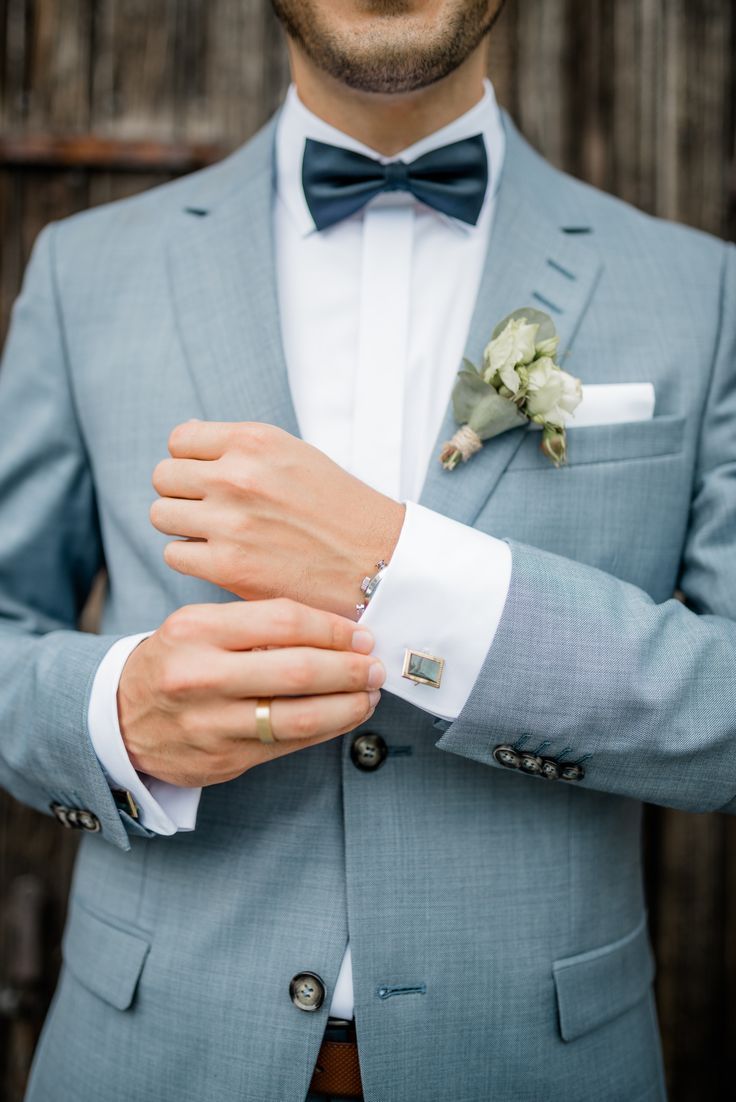The Evolution of Men's Suits: A Tailored History
Overview
Men's suits have evolved from the 17th century's three-piece designs introduced by King Charles II to modern styles that reflect individual expression and sustainability. The article explores their historical progression, key trends, and tips for finding the perfect suit, emphasizing the importance of fit, fabric choice, and adapting to contemporary fashion norms.
Frequently Asked Questions
1. What are the origins of men's suits?
2. How did men's suits evolve in the 18th century?
3. What significant changes occurred in men's suits during the 19th century?
4. What influenced men's suits in the early 20th century?
5. What current trends are seen in men's suits?
Men's suits have been an enduring symbol of style, sophistication, and status. Throughout history, the design and tailoring of these garments have evolved significantly, reflecting changes in fashion, culture, and societal norms. In this article, we will explore the fascinating journey of men's suits, from their origins to the modern-day trends and styles available in suit stores across the globe. Whether you are looking for the best suits or exploring options for cheap suits, understanding this evolution will enhance your appreciation for formal mens clothing and guide you in making informed choices.
The Origins of Men's Suits
The tailored suit we know today can trace its roots back to the 17th century when King Charles II of England introduced the fashionable three-piece suit. This ensemble consisted of a coat, a waistcoat, and breeches, primarily made from luxurious materials such as silk and velvet. The emphasis on fit and design marked the beginning of tailored mens suits, setting the stage for future developments.
The 18th Century: The Rise of the Tailcoat
As the 18th century approached, mens suits began to evolve into what we now refer to as the tailcoat. This style featured longer back panels that flared out, giving the wearer an air of elegance and nobility. Tailcoats became a staple in formal mens clothing, particularly among the upper classes during events and gatherings.
Notable characteristics of the tailcoat include:
- High collars and lapels
- Buttons down the front
- Exaggerated tails that extended down the back
This era also introduced several styles of waistcoats that enhanced the lavishness of the outfit, further emphasizing both craftsmanship and social status.
The 19th Century: The Birth of Modern Tailoring
As we transitioned into the 19th century, the Industrial Revolution brought about significant advancements in textile production and fashion. This period saw the emergence of modern tailoring techniques, making mens suits more accessible to the middle class. It became common for men to don suits for everyday wear, and the silhouette began to lean towards a more structured appearance.
The Frock Coat and Morning Coat
The frock coat emerged during this time, featuring a fitted waist and a skirt that fell just above the knee. It was the perfect choice for both formal and semi-formal events. Meanwhile, the morning coat became a popular choice for daytime events, characterized by its cutaway front and longer back.
This era also saw the creation of ready-to-wear suits, further democratizing fashion. Men started purchasing cheap suits from department stores, making tailored clothing accessible to a wider audience.
The Early 20th Century: The Classic Suit Takes Shape
The early 20th century marked a crucial transitional period in the evolution of mens suits. The classic suit jacket as we know it, with its straight cut and notch lapels, became the norm. This style exuded professionalism and became synonymous with modern masculinity.
The Influence of World Wars
World War I and II significantly impacted fashion, leading to practical designs that catered to the demands of wartime living. Soldiers needed suits that were durable and comfortable after returning home, which resulted in the introduction of simpler lines and materials. Post-war, the demand for suits saw a major spike, as returning soldiers sought to dress in formal mens clothing for various occasions.
The Mid to Late 20th Century: A Revolution in Style
The mid-20th century witnessed a fashion revolution, influenced by social movements, music, and cinema. Icons such as Frank Sinatra and James Dean popularized a more relaxed and youthful aesthetic, leading to a surge in creative tailoring. This era marked the introduction of different fabrics, patterns, and colors in mens suits, allowing for more personal expression.
Pop Culture and Fashion Icons
During this period, the power suit became a staple in the wardrobes of men entering the corporate world. Businessmen opted for sharp, tailored suits that commanded respect and represented authority. The fabric was often wool or polyester blends, providing versatility for various occasions.
Key trends during this time included:
- Bold colors and plaids
- Double-breasted jackets
- Wide lapels
As the decades progressed, the 1980s and 1990s ushered in a more relaxed approach with designs emphasizing casual chic. Suits with a more fitted look began to dominate as the notion of "business casual" transformed the landscape of formal mens clothing.
The 21st Century: A New Era of Menswear
Today, the landscape of men's suits has transformed yet again with the advent of new styles, fits, and fabrics. The rise of designer brands, fast fashion, and online shopping has made it easier to find the best suits tailored to individual tastes. You can now find options ranging from finely crafted bespoke suits to affordable alternatives in the best suit stores.
Embracing Diversity in Styles
The modern gentleman is stepping outside the boundaries of traditional business suits. Contemporary mens suits often include:
- Skinny and slim-fit designs
- Casual blazers paired with dress pants
- Textured fabrics such as linen and cotton for summer
- Unconventional patterns and prints
Moreover, a growing consciousness around sustainability has led to an increased interest in eco-friendly fabrics and ethical production methods. Many suit stores are adapting to these demands, offering collections that are conscious of environmental impact.
Finding the Perfect Suit
Shopping for the perfect mens suit can be an exciting yet daunting task. Whether you are looking for something timeless or trendy, it's essential to consider various factors such as style, fit, and occasion. Here are some tips to keep in mind when searching for suits:
Know Your Body Type
Understanding your body type can significantly influence how a suit looks and feels on you. For instance:
- If you're athletic, opting for tailored fits can highlight your shape.
- For a slim build, consider slim-fit options or structured suits that provide definition.
- Men with broader shoulders may favor a relaxed cut to provide comfort and mobility.
Choose the Right Fabric
The fabric of the suit can make a massive difference in both comfort and style. Depending on the season and occasion, here are some suitable fabric choices:
- Wool: Ideal for almost any occasion, wool suits are versatile and breathable.
- Linen: A lightweight option perfect for warm weather events.
- Blends: Polyester or cotton blends offer durability and are often more affordable.
Pay Attention to Fit
A well-fitted suit significantly enhances overall appearance. The sleeves should end around the wrist, the jacket should contour slightly at the waist, and the pants should fall without pooling. This is where alterations can be your best friends, especially when buying cheap suits.
Redefining Formal Mens Clothing
The landscape of formal mens clothing continues to change, with many brands offering innovative styles that blend tradition with modern flair. The incorporation of playful patterns and colors into suits is enabling men to express their individuality while still adhering to dress codes.
Casualization of Formal Wear
The notion of wearing suits for everyday occasions has become increasingly accepted. This casualization means that men are looking for ways to dress down their formal wear while maintaining elegance. Mixing and matching suit separates, like pairing a blazer with chinos or denim, has become a popular trend that allows for versatility.
Discover Your Style at Your Suit Store
As we've observed through the evolution of men's suits, style is all about comfort, individuality, and knowing what works for you. Exploring your local suit store or online options, such as upscale brands to affordable retailers, can provide you with countless opportunities to discover your unique look. Whatever your budget or style preference may be, there is a suit out there waiting for you.
Embrace Your Suit Journey
The world of men's suits is rich with history and transformation. Whether you are partaking in a formal occasion, embracing a new career, or simply wanting a stylish upgrade to your wardrobe, there are numerous avenues to explore. From cheap suits to the best suits available, remember that the key lies in finding what fits you best. Embrace this journey with confidence, and you'll undoubtedly turn heads!








